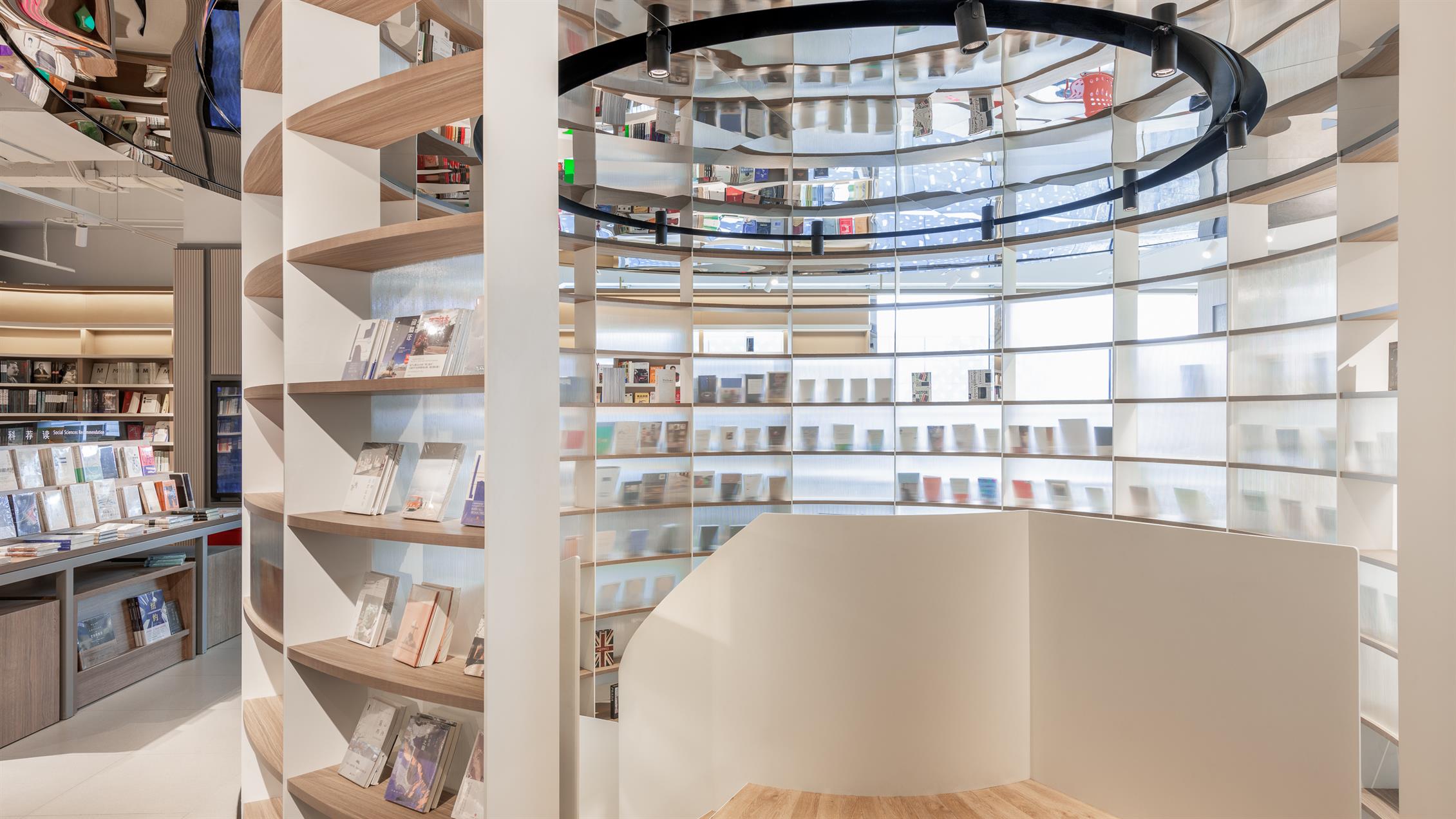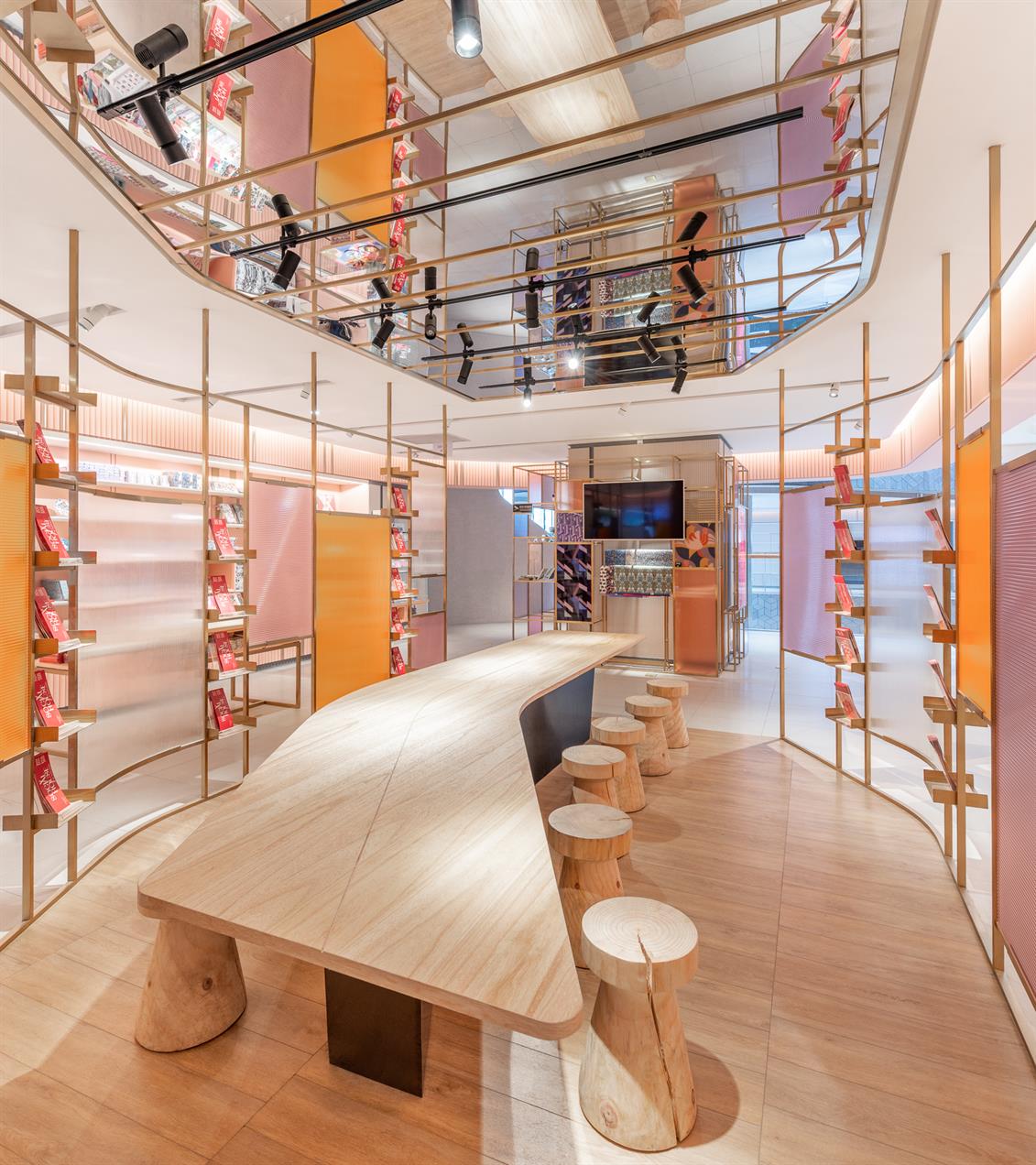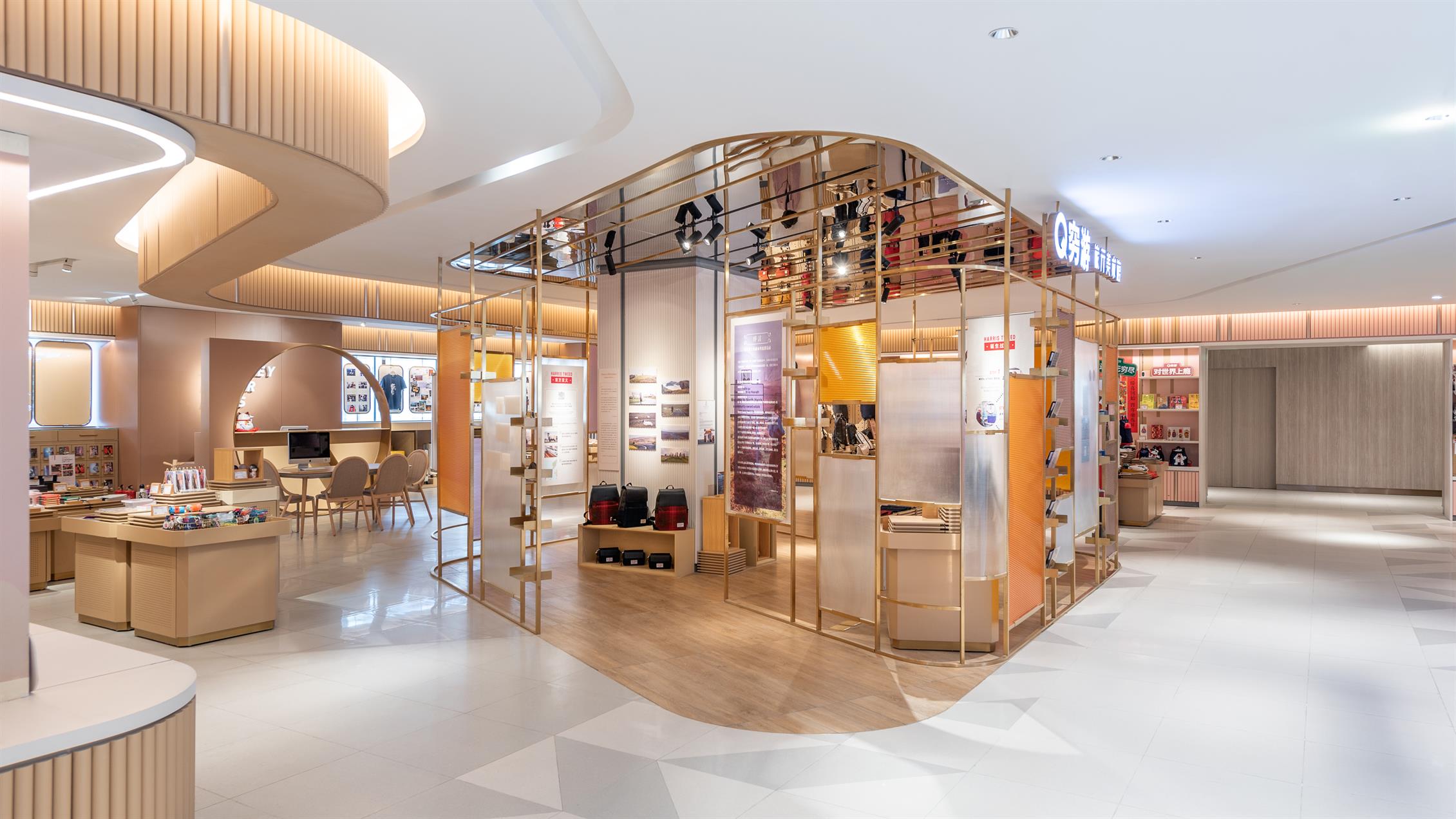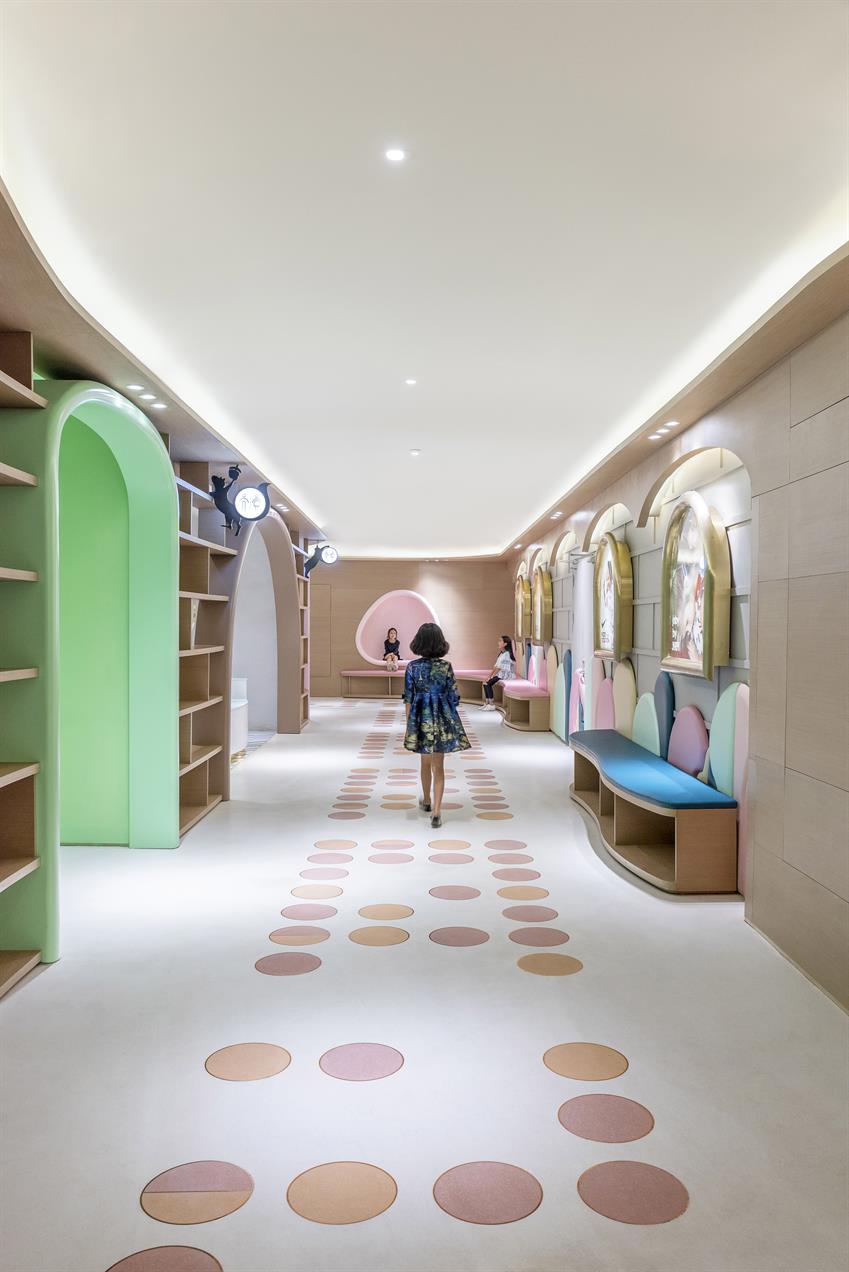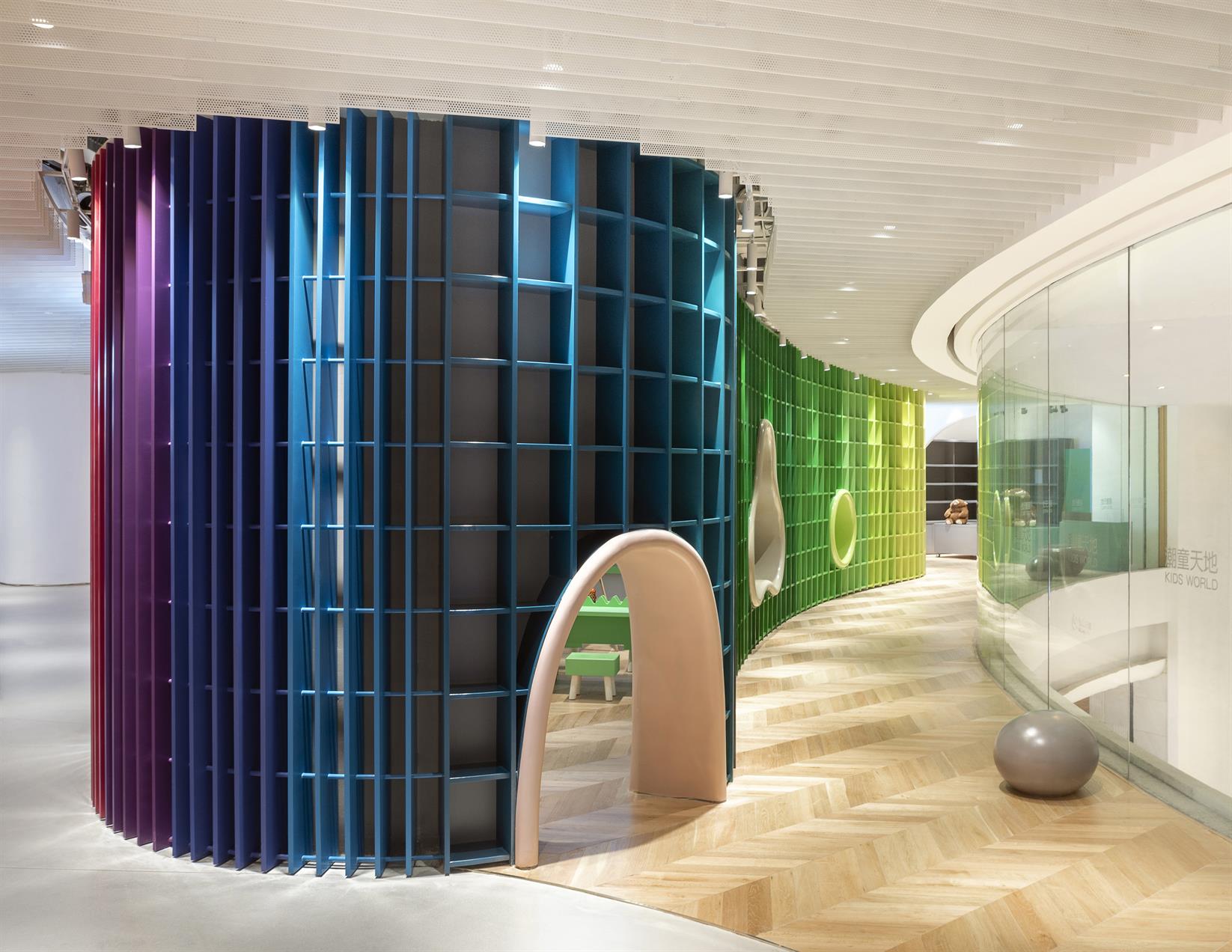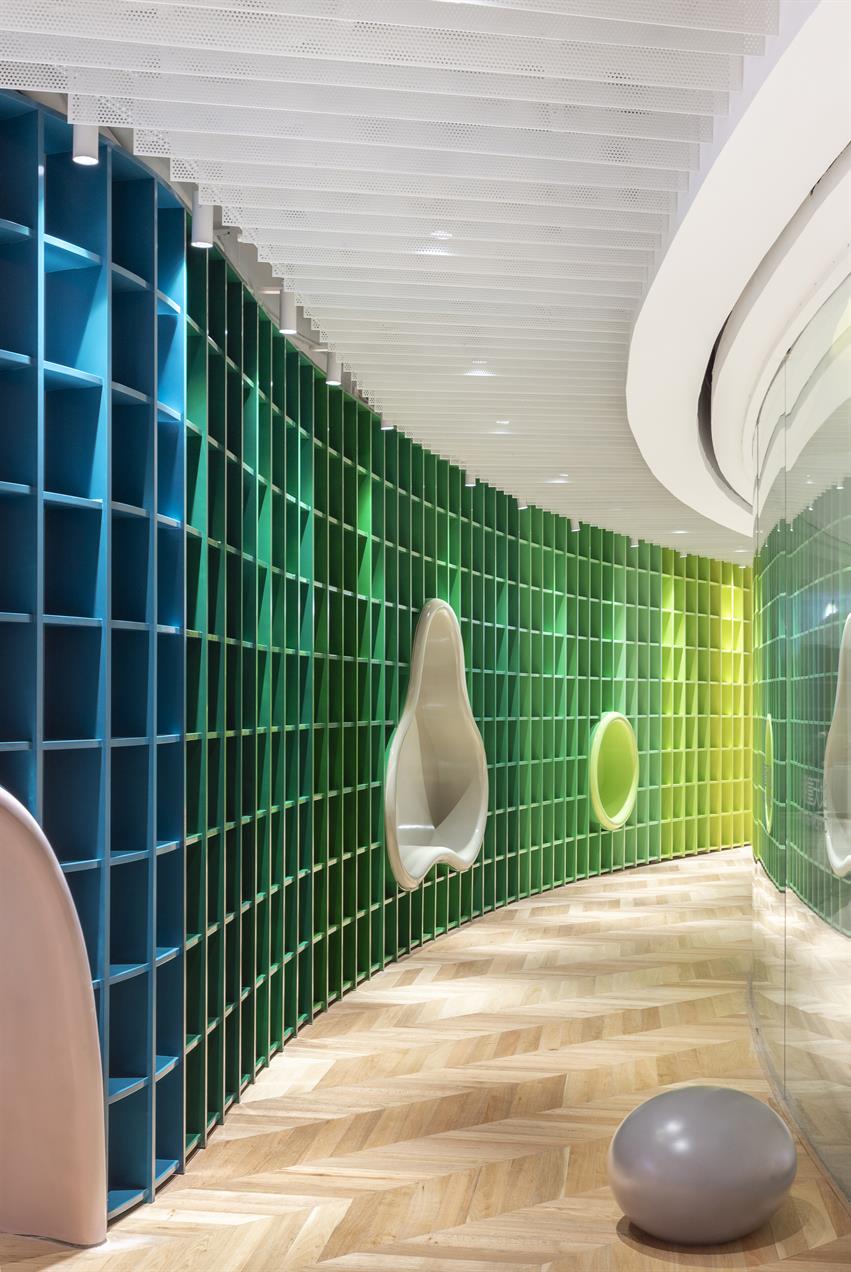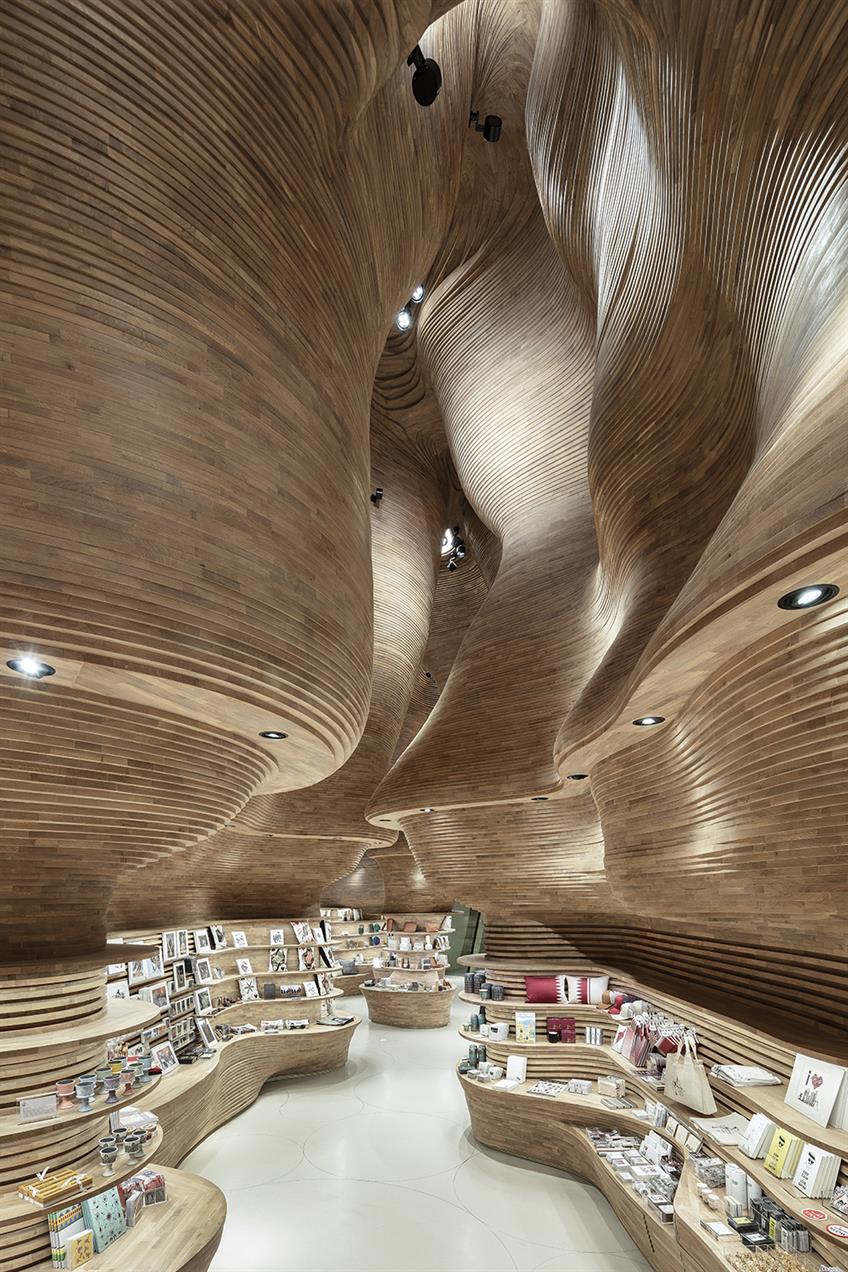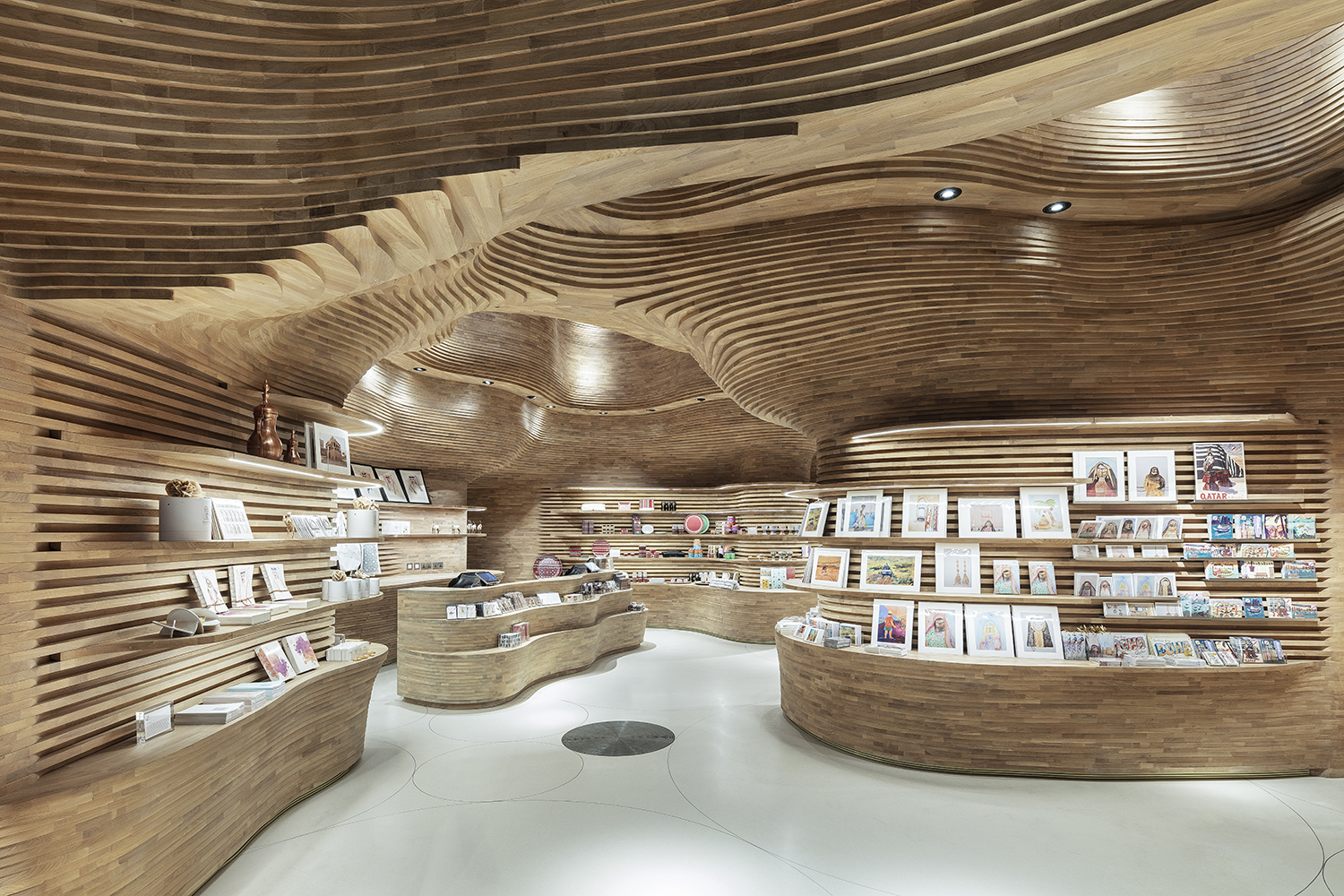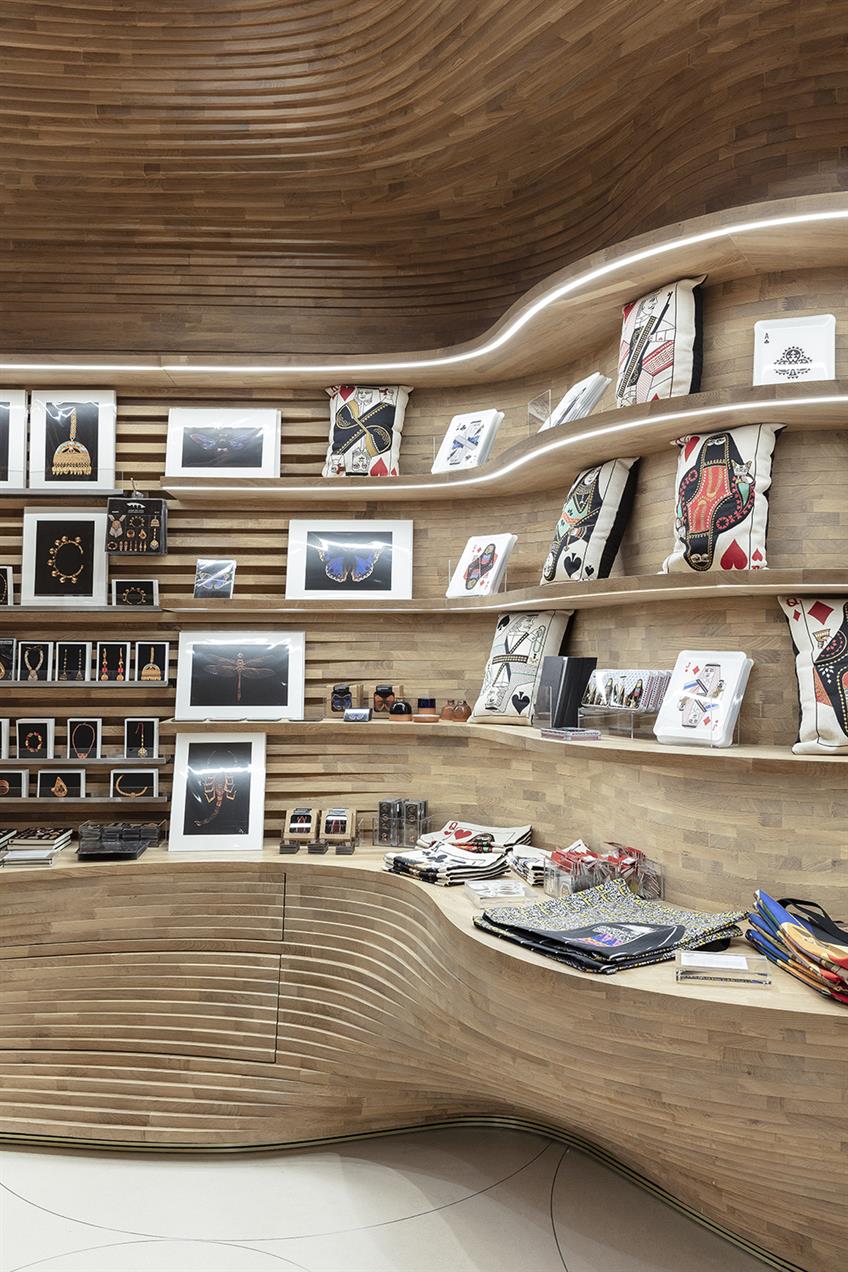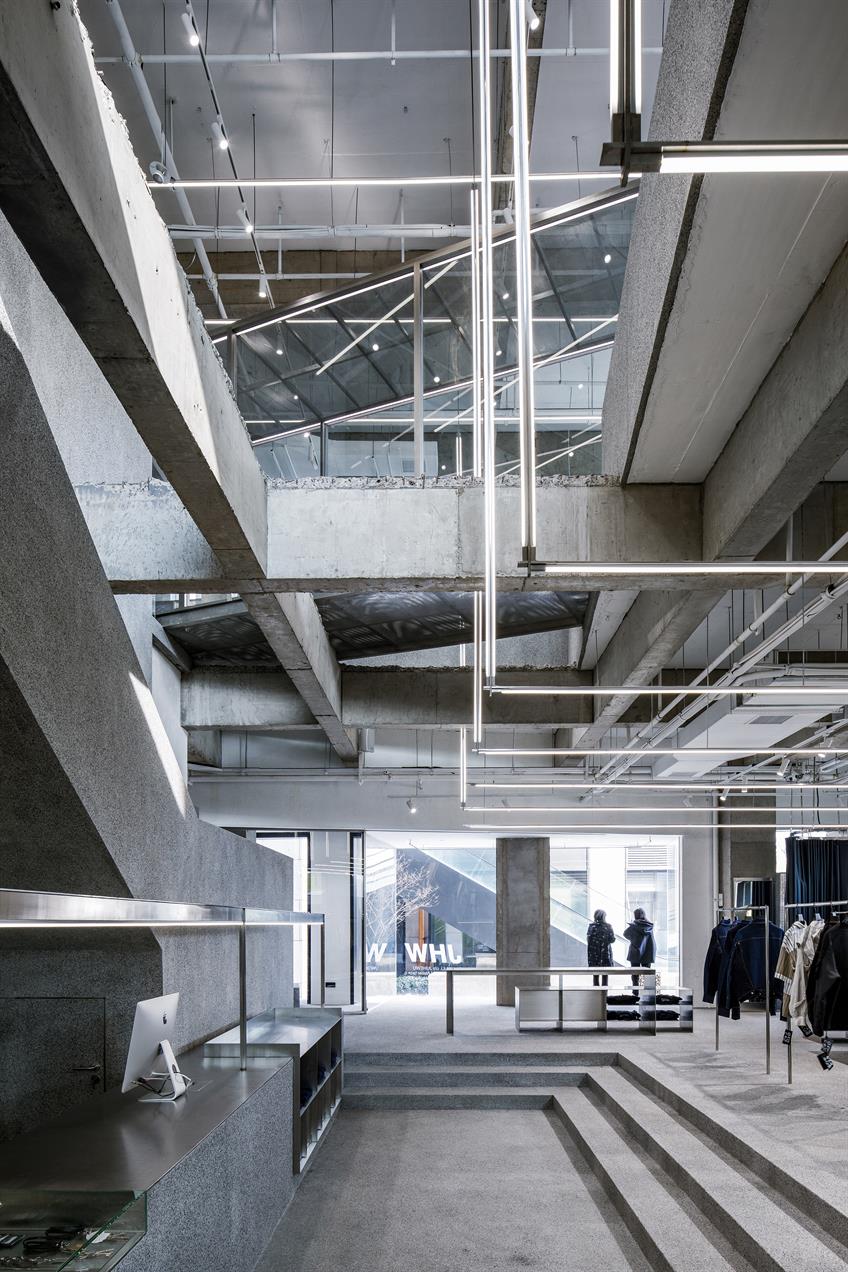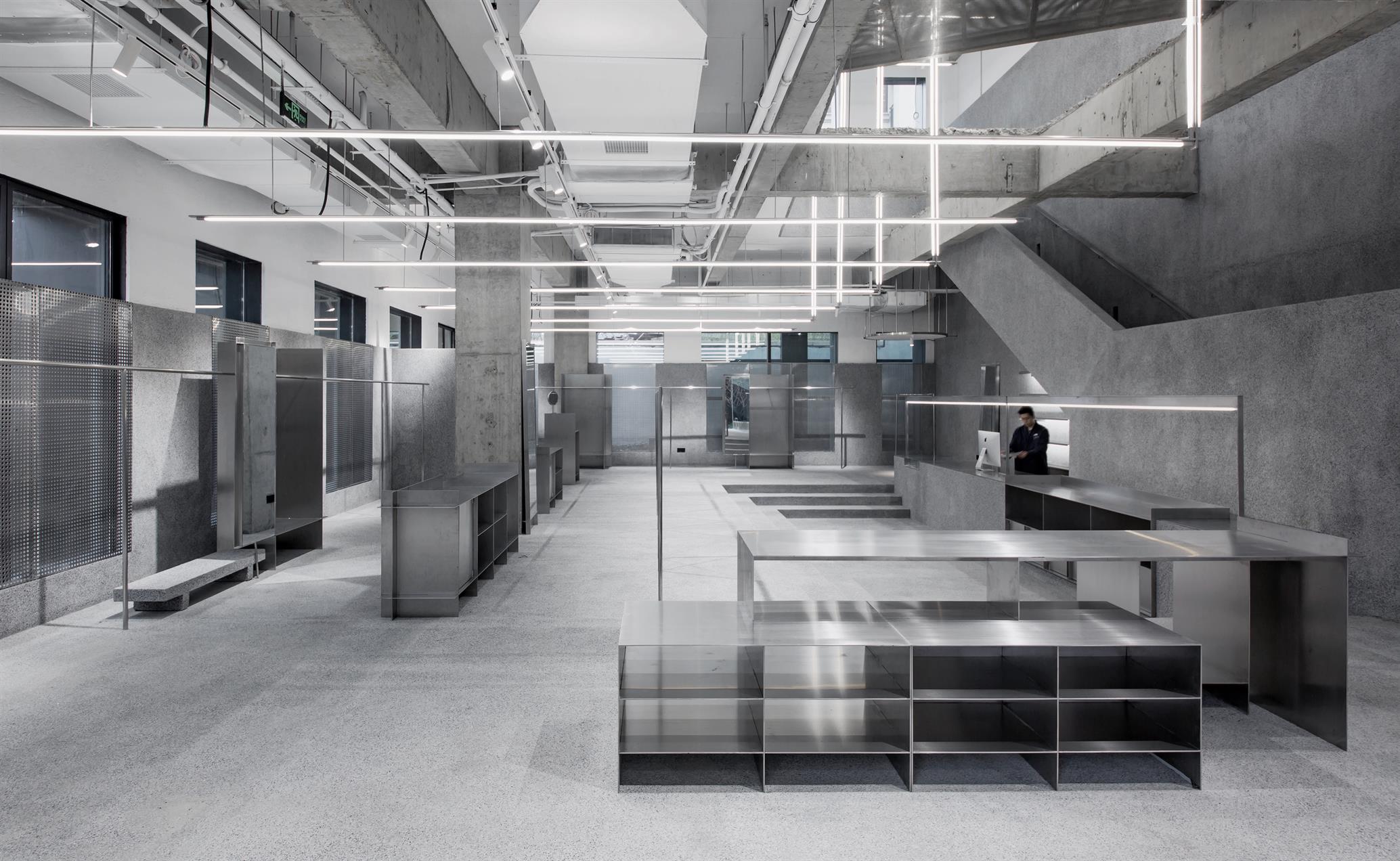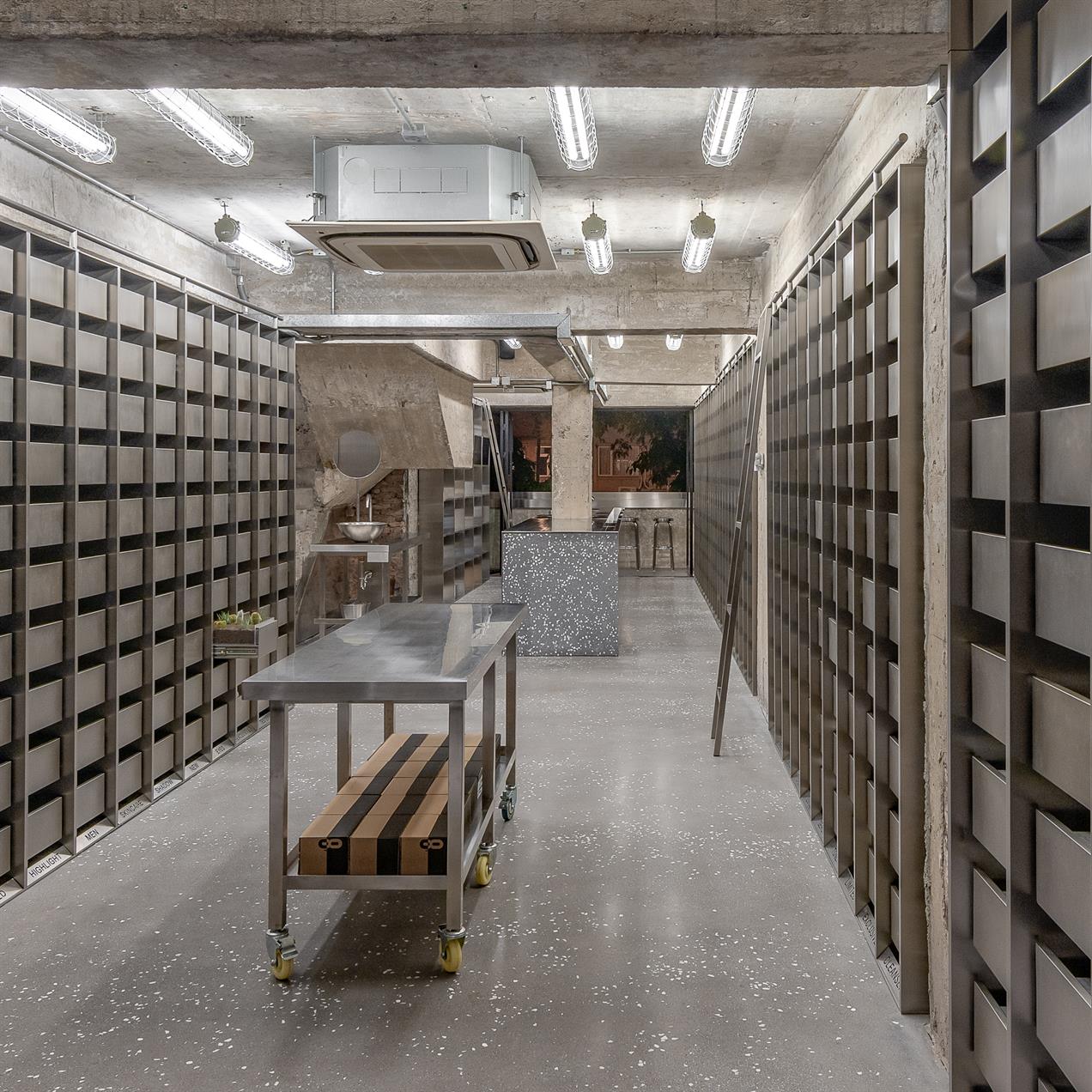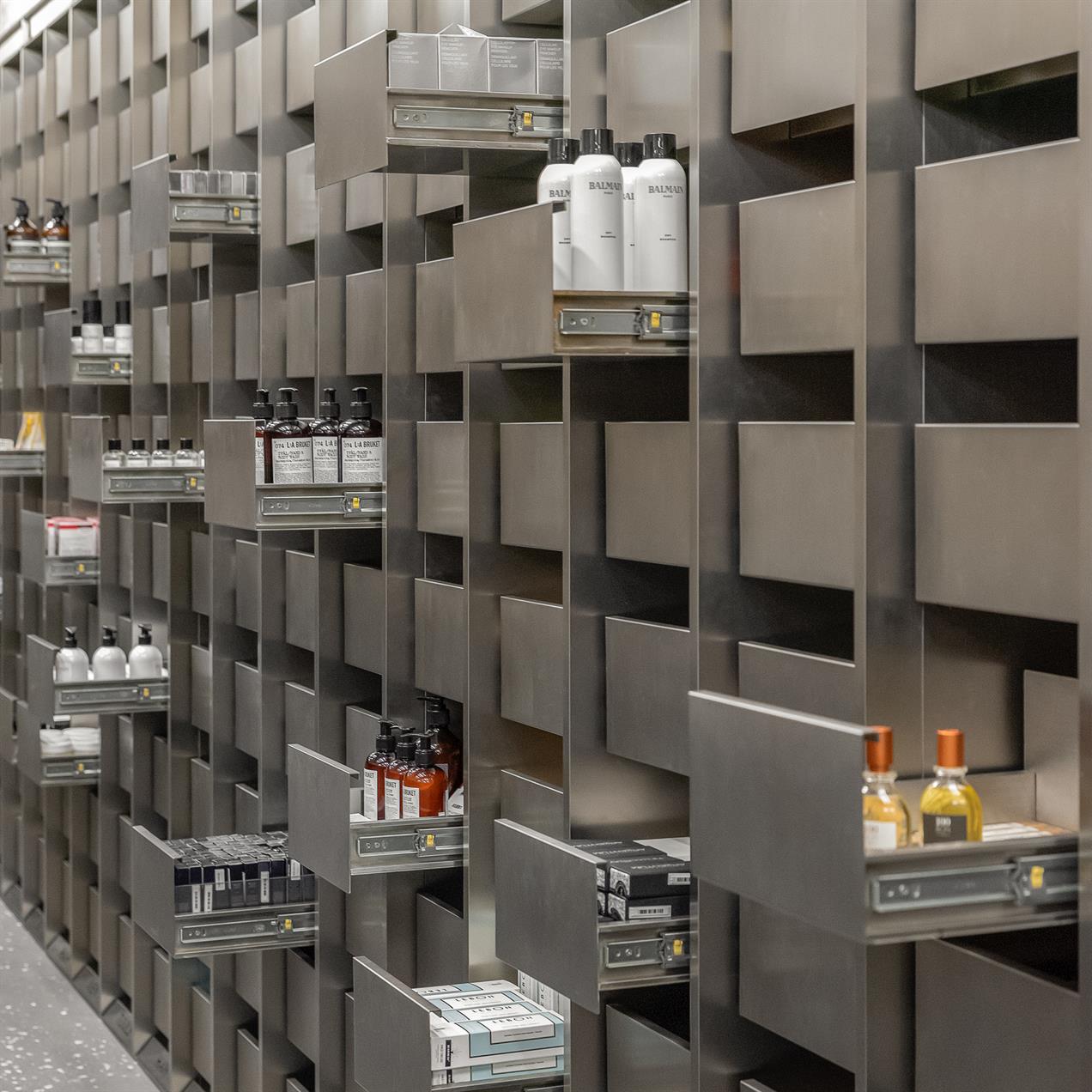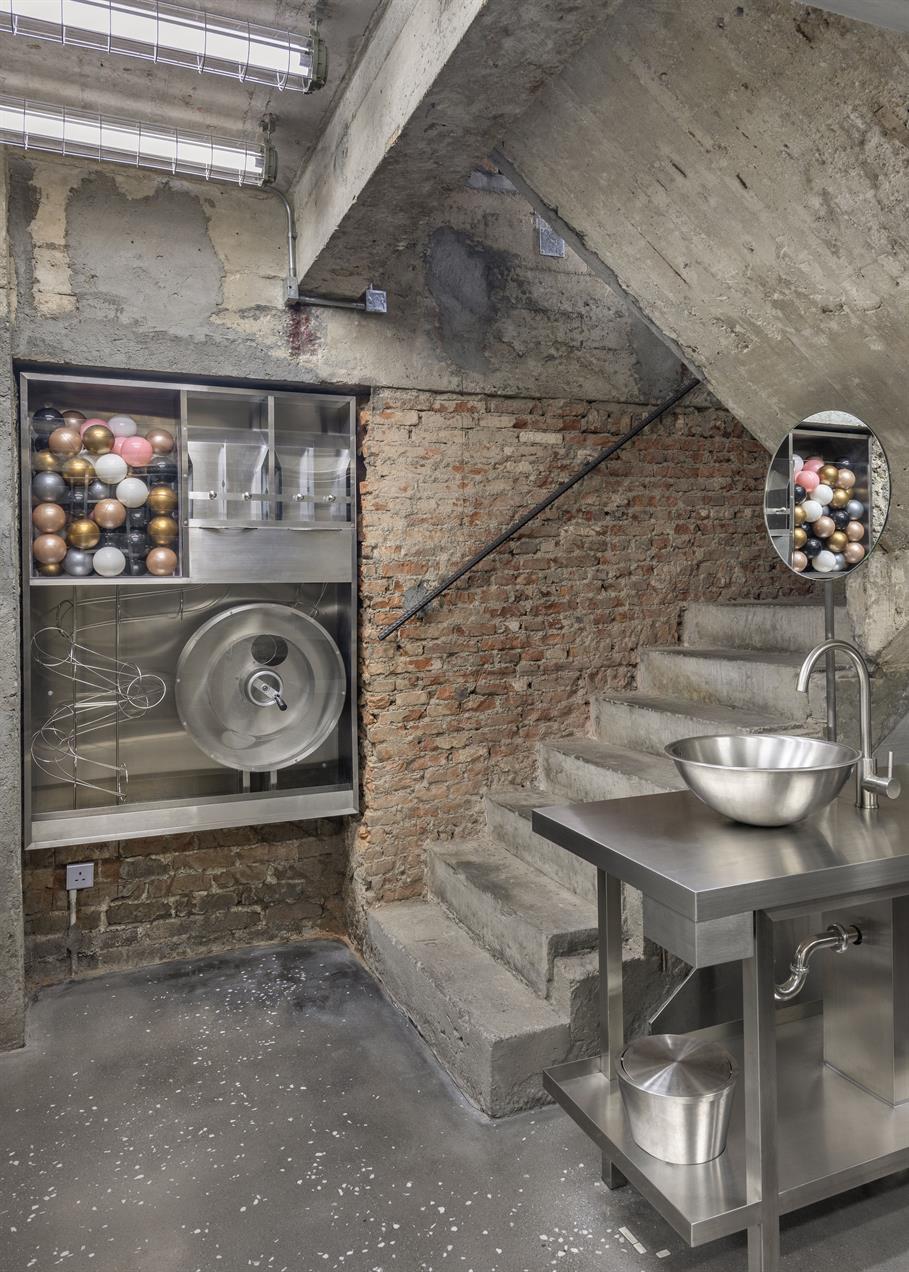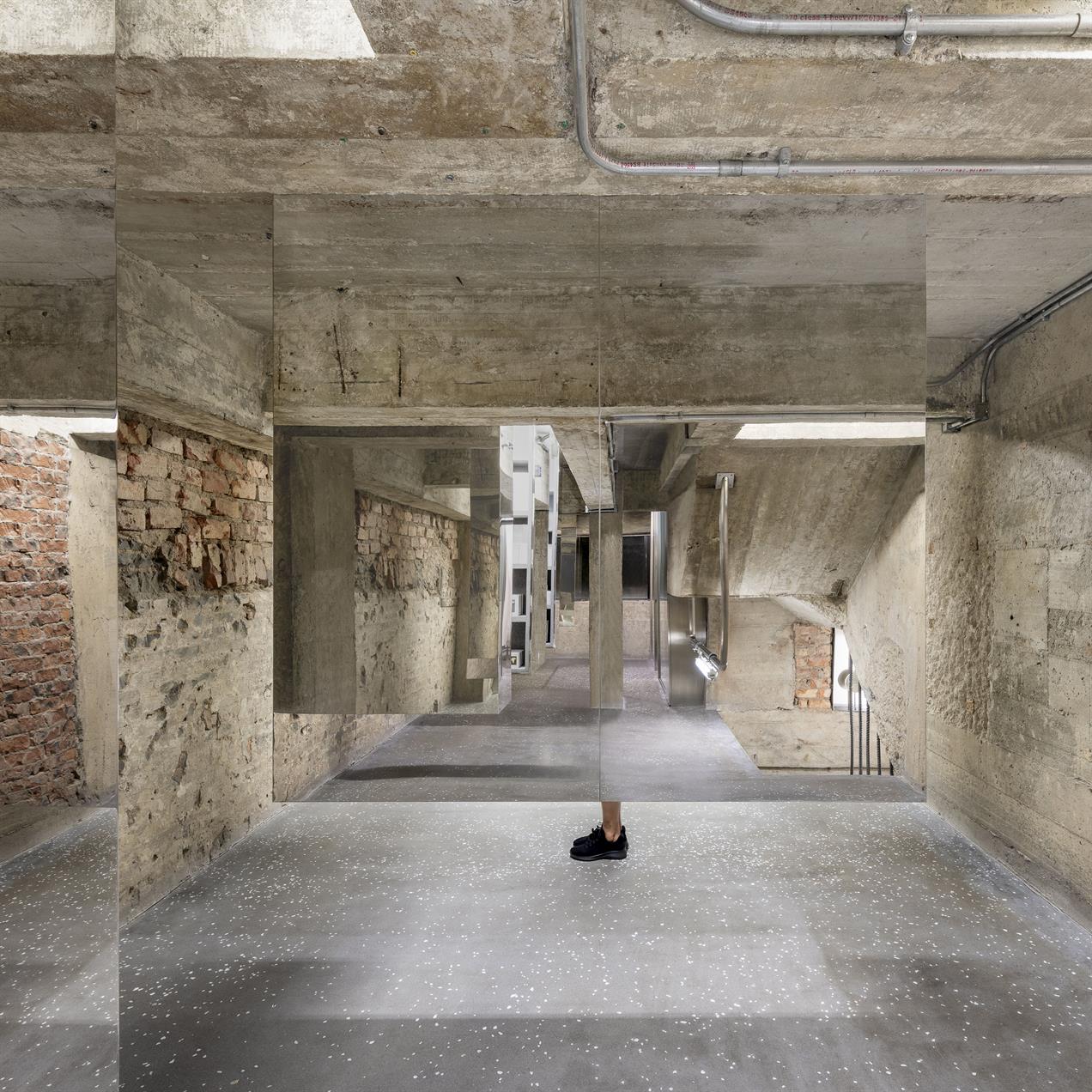Chain Stores, Department Stores, Supermarkets, Concessions & Pop-ups
Gold: Kokaistudios, Social House by Xintiandi
Hybrid and holistic, the Social House by Xintiandi is a multifunctional space comprising retail, food and beverage and lifestyle elements. Positioned across two floors of the recently renovated Xintiandi Plaza in Shanghai’s central business district, the venue has been designed for openness and exchange, bringing the vitality of outside in. To connect to its outside environment and convey the cyclical nature of Social House’s changing program of pop-ups, exhibitions, and events, the two-storey venue is organized into functional areas conceived as gardens, and arranged thematically by seasons. To that end, and uplifting in every sense, both arrival escalators into Social House are flanked by immersive audiovisual installations comprising multiple screens showing abstract shapes to suggest spring flowers or clouds.
Layered within this imagined cyclicality of seasons, seven unique pavilions extend Social House’s garden metaphor, lending the space an additional ecosystem of functionality. Each one unique, they provide fixed landmarks or waypoints in this otherwise open space. They have been designed for flexible content, according to Social Houses’ changing program of pop-ups, exhibitions, and activities.
A response to China’s shifting retail landscape, which increasingly incorporates online shopping with offline showcases; and an appetite for multifaceted, lifestyle-focused venues, Social House signals a new model for Shanghai. A one-stop destination for fashion; experience and education; wellness and health, and above all, betterment, it is built with flexibility in mind.
Silver: Arizon Design, Joy City Kid’s World
How to integrate the three-layer staggered structure of different heights on this floor is a challenge for the architect. The architect is inspired by Dandelion Hill, imagining the form of hills when adopting the rhythm of “contouring lines” in an undulating geography. In this space of 4200sqm, the retailing stores and public entertainment areas are merged into the circular moving stream of visitors.
The main scene is in the lift hall, the dandelion stems breaking through the soil and spreading. The “singing” stem art installation encourages the kids to hear the nature simply with ear, paying close attention. As kids are opening eyes, enjoyable Flower Bud Book House and splendorous “Rainbow Forest” come to sight. The kids climb through the playful sliders with their body fully touching and feeling the movement, exploring tree houses in central plaza. In the end, they reach the shining “Fairy Masquerade”.
Like a palette being knocked over, the project brushes up to 200 colors in areas with different themes. Art installations and stores bump into and merge with each other, bringing livelihood and amusing expectations to the space.
The entire space is metaphorical for the process of life from budding, growing to maturity, encouraging the creative caprices and ideas to grow in kids, and leading them to explore the magic of nature.
Independent Shops or Small Chains
Gold: Koichi Takada Architects, National Museum of Qatar Gift Shops
The Dahl Al Misfir (Cave of Light), located in the heart of Qatar, is a beautiful underground sanctuary formed largely from fibrous gypsum crystals that give off a faint, moon-like, phosphorescent glow. Inspired by Dahl Al Misfir, the National Museum of Qatar Gift Shops echoes Koichi Takada’s vision of bringing nature back into architecture, establishing relationships that connect people and nature through design. Using 3D modelling software, the shops are a three-dimensional puzzle, comprising 40,000 individual wooden pieces. Each is unique, fitting only with its corresponding piece and were assembled by hand on site.
The Museum Gift Shops are a culturally rich response to the National Museum of Qatar’s curatorial mission – Heritage meets Innovation.
The intensity of the design and craftsmanship pays homage to Jean Nouvel's desert rose inspired architecture. One of the biggest challenges was dealing with the complexity and monumental scale of the museum design, a 53,000sqm agglomeration of interlocking. There were no straight lines; all curved creating very complex spaces internally. Working within these parameters, the shop interiors reproduce the geometries and chromatism of the desert-inspired architecture on a human scale.
The National Museum of Qatar was also the first national museum in the world to receive both a LEED Gold and a 4-STAR (Global Sustainability Assessment System) sustainability rating. The shop interiors were constructed from European Oak, a conscious decision because of its renewable green credentials that aligned with the sustainable goals of the museum.
Silver: Atelier TAO+C, JHW Store
A greyscale palette of two materials, the washed granolithic plaster juxtaposed with brushed stainless steel, formed a unique monochrome space for this two-stories, men-wear select shop. Washed granolithic plaster has a different name - Shanghai plaster, which has been most commonly used as exterior façade finish for the art deco buildings in Shanghai back to the 1920s, a material which are granitic stones mix the cement to form a gentle and rough texture. Reusing this once-popular yet forgotten material, the architects seek to evoke memories of the most dynamic and creative era and city to convey a more local sense of the street. Responding to the owners’ request to feature domestic fashion brands in this 400sqm space and promote local young designers. The architect puts a lightweight inner shell made of shanghai plaster and perforated stainless steel into the original building, enclosed a mysterious inner field. The sun shines through the perforated stainless steel, projected oblong spots onto the fine-grained ground. The center of ground floor is recessed by three steps to form a sunken plaza to loosely divide the display area and the activity area. The slab above the square was cut away to form a double-height space, and the original beams were exposed and became a cross in the opening. The horizontal linear lighting hanging on the ceiling of the ground floor turns up and vertically across the opening which visually connects two layers. The glass corridor on the upper floor crossed over the opening.
Bronze: Aim Architecture, Harmay Hong Kong
Online shopping will never lose its allure but culturally, we are at an intersection. Consumers want convenience but crave experience. This bold innovative approach to retail conceives a space for exploring and discovering hidden treasures.
For Harmay, an online cosmetics retailer we delve into this online/offline duality of the brand even further and explore the dynamics of modern consumption. This Modern day boutique meets old-school apothecary. It offers visitors the unexpected elevation of shopping and the callbacks and comforts of the digital age convenience.
Walking in, stainless steel drawers lined walls, giving the space an orderly and calming shopping experience. It is not even about shopping, but instead, it’s about discovery. Subtle signage guides guests to open drawers, revealing the products inside.
Walking up towards the second floor, space is left untouched, as found. It is rough and even raw to the senses, immersing guests in the tactile experience of traditional shopping.
Here stainless steel mirrored cabinets are suspended from the ceiling; reflective surfaces hide their existence. The found space, they engage in a powerful dialogue creating an intimacy with the products, placing them straight into the hands of our shoppers.
Hong Kong is notoriously cramped, but despite its smallness, the two floors spatially connected through the omnipresent rough brick walls, concrete ceilings and the continuous floor creating an unanticipated and spacious illusion.
The powder room echoes this, with its glass wall, guests might second guess its function, but then a well-placed curtain creates playful privacy, leaving just feet exposed.


